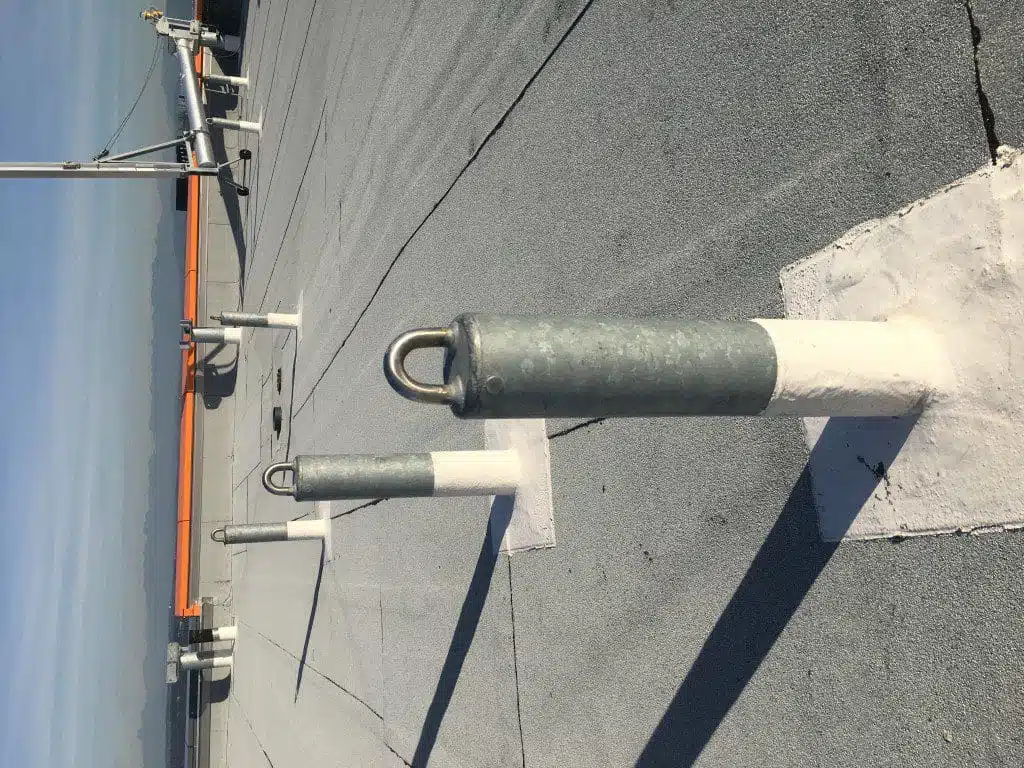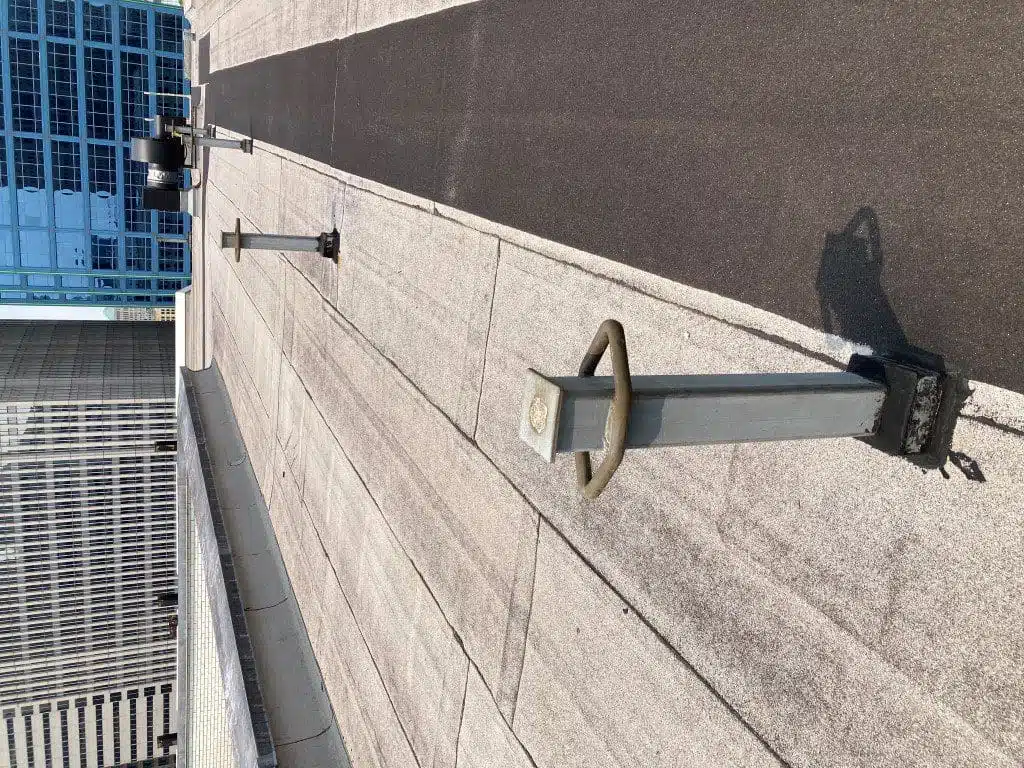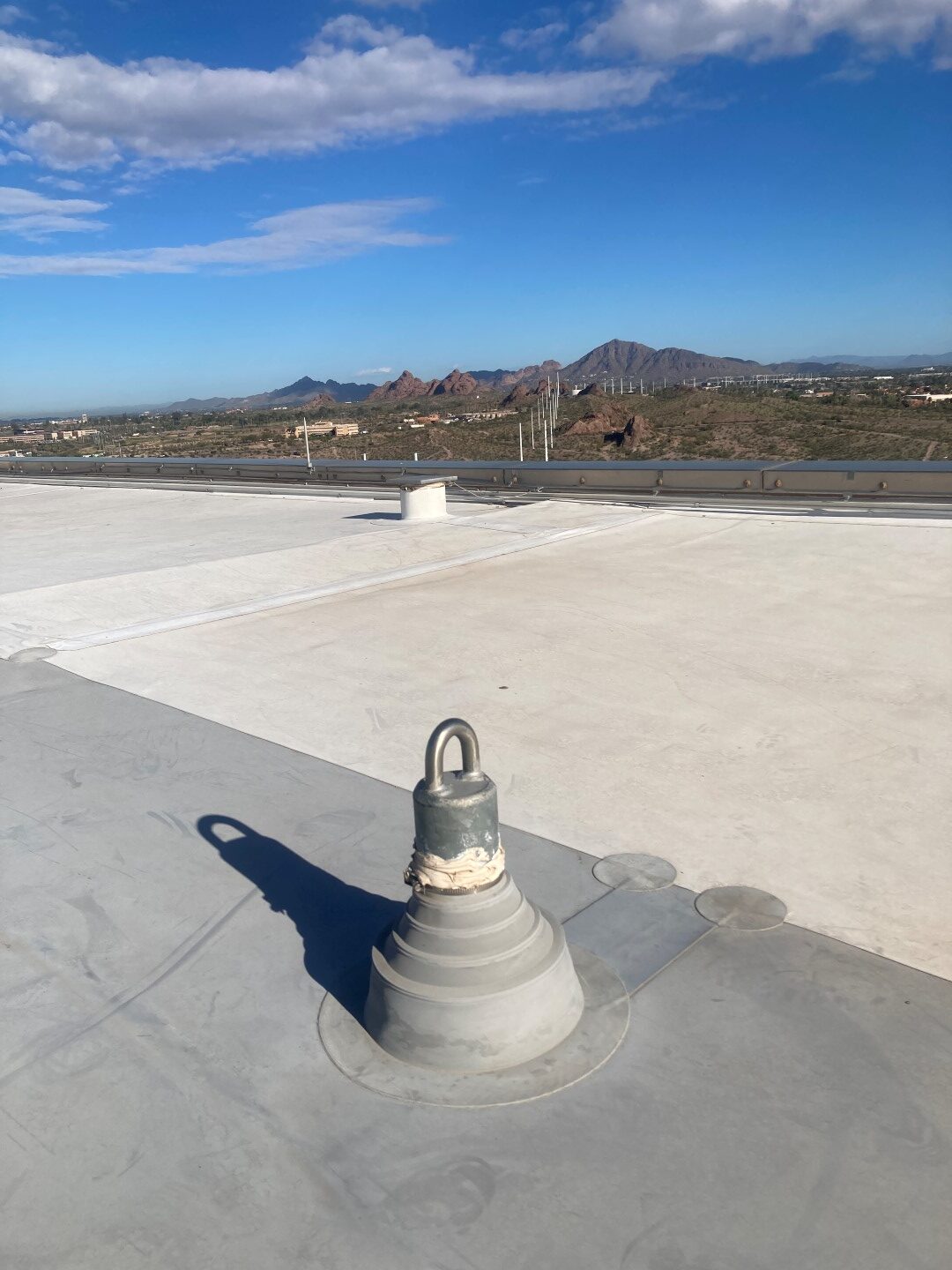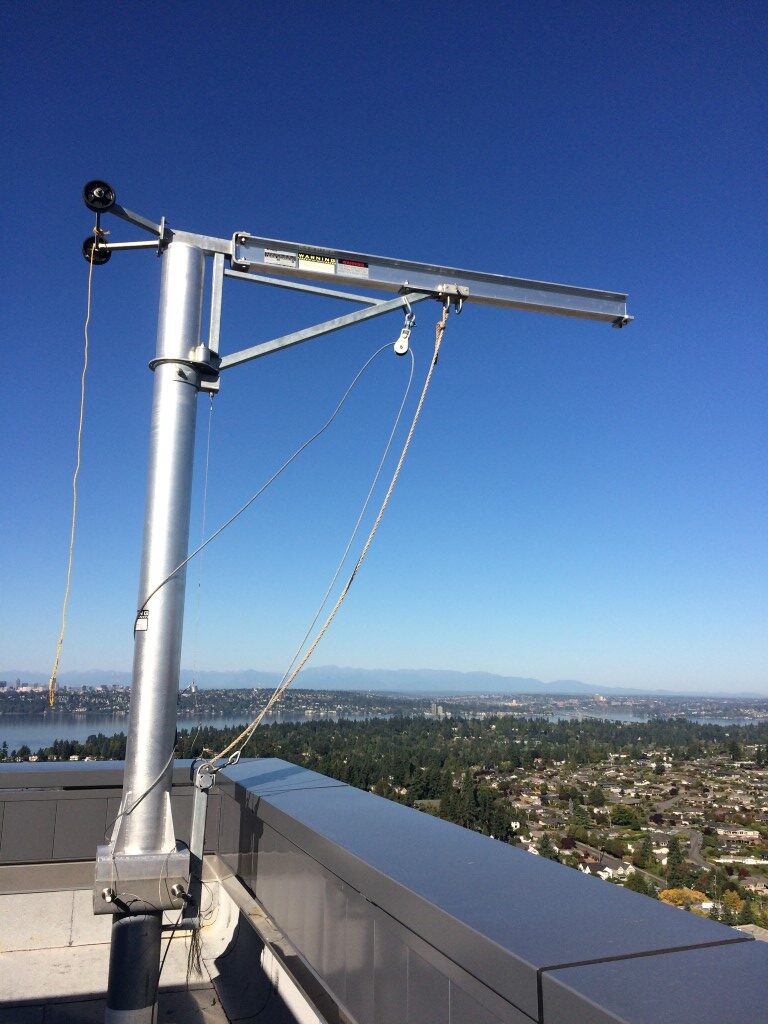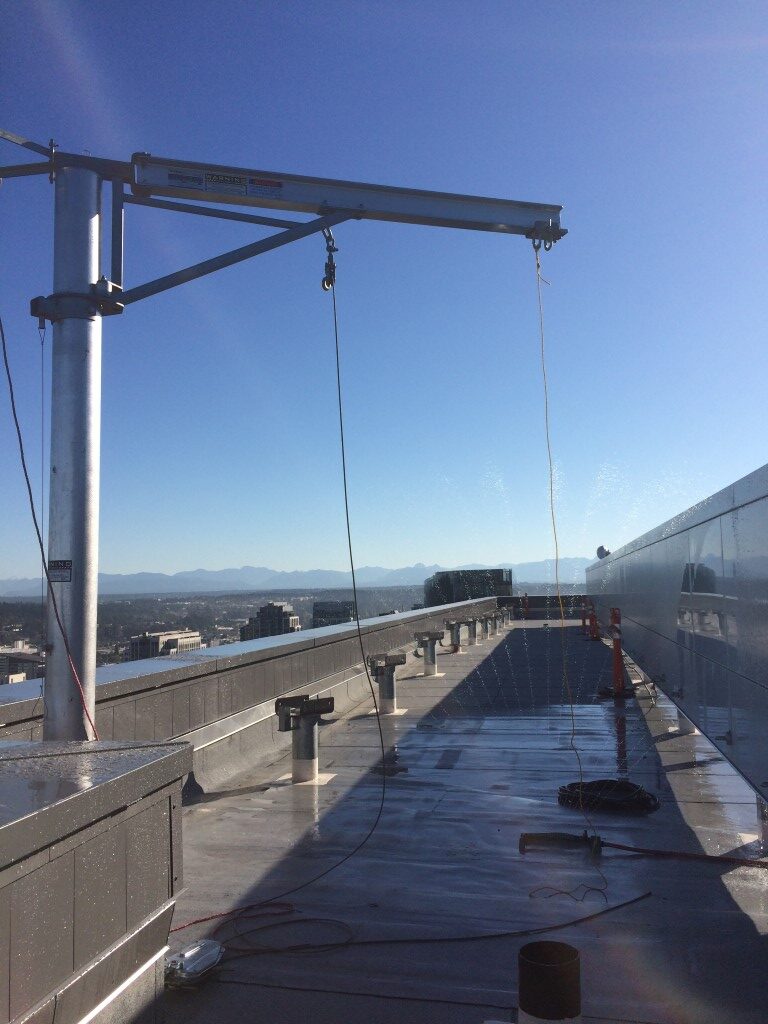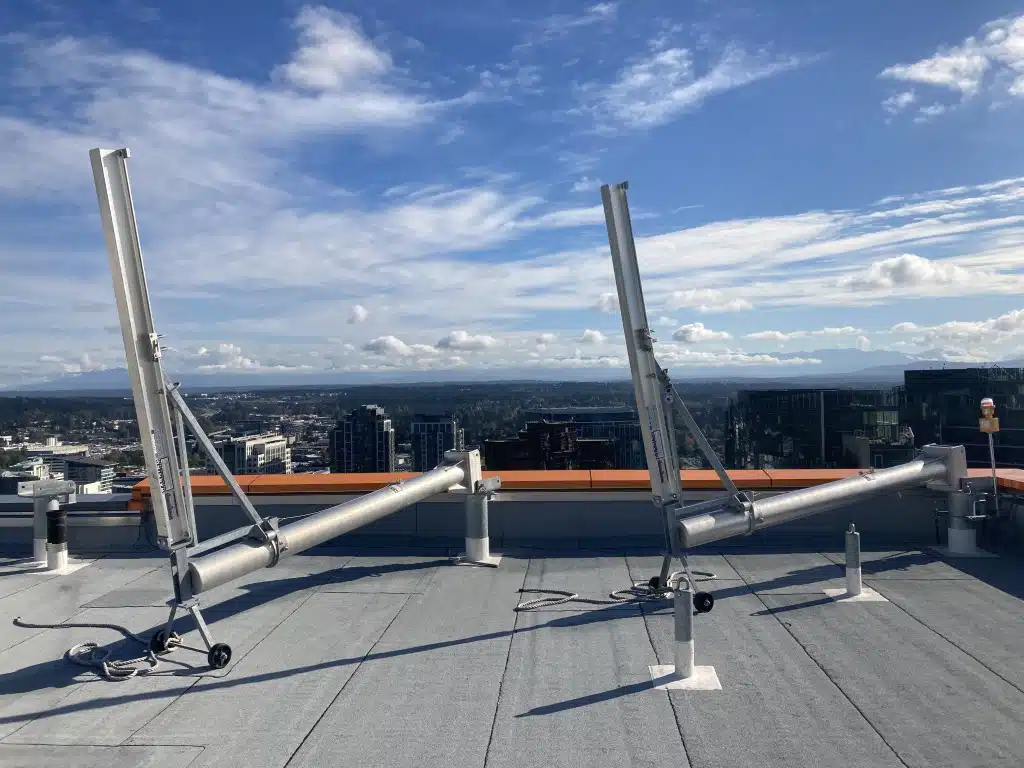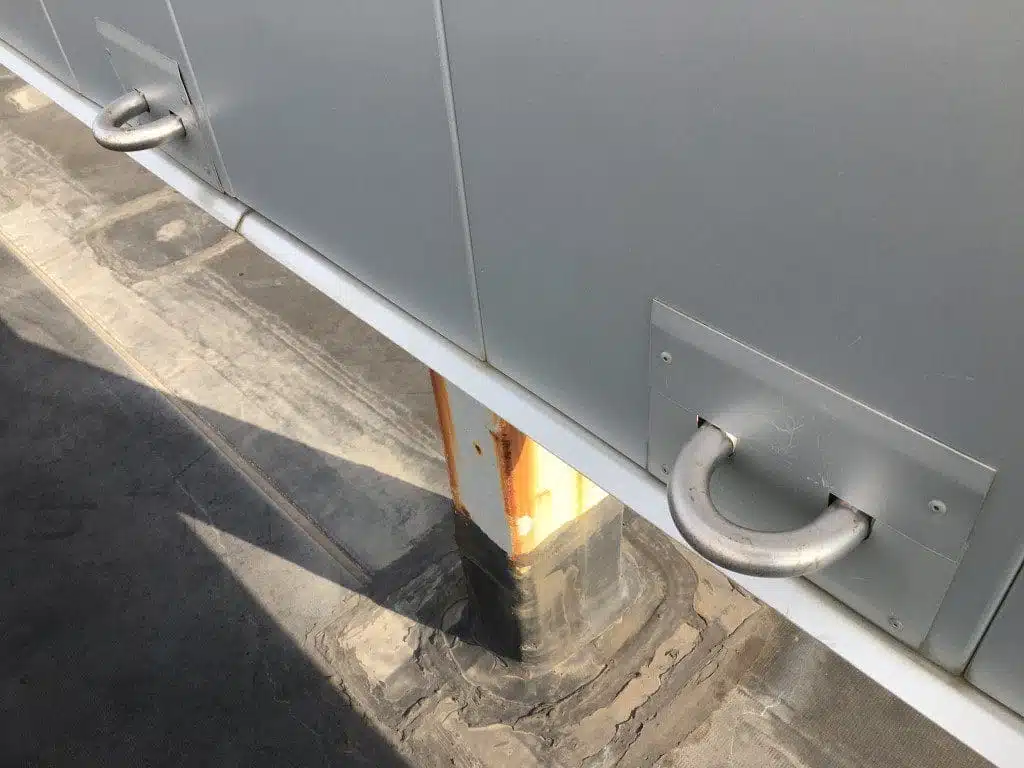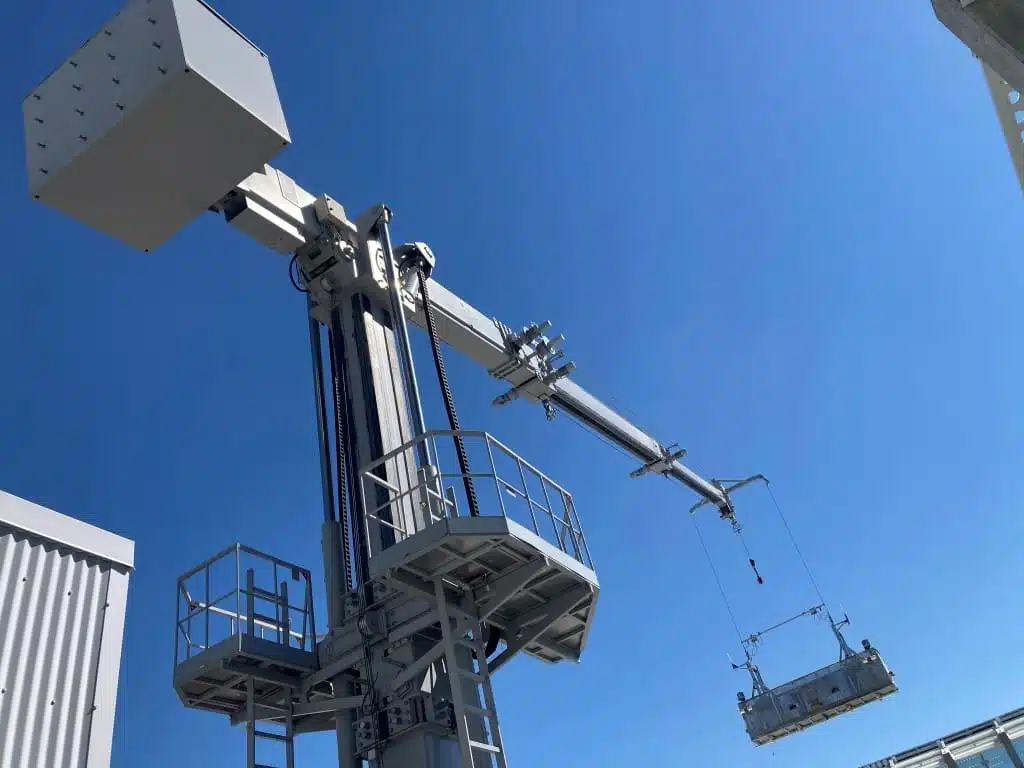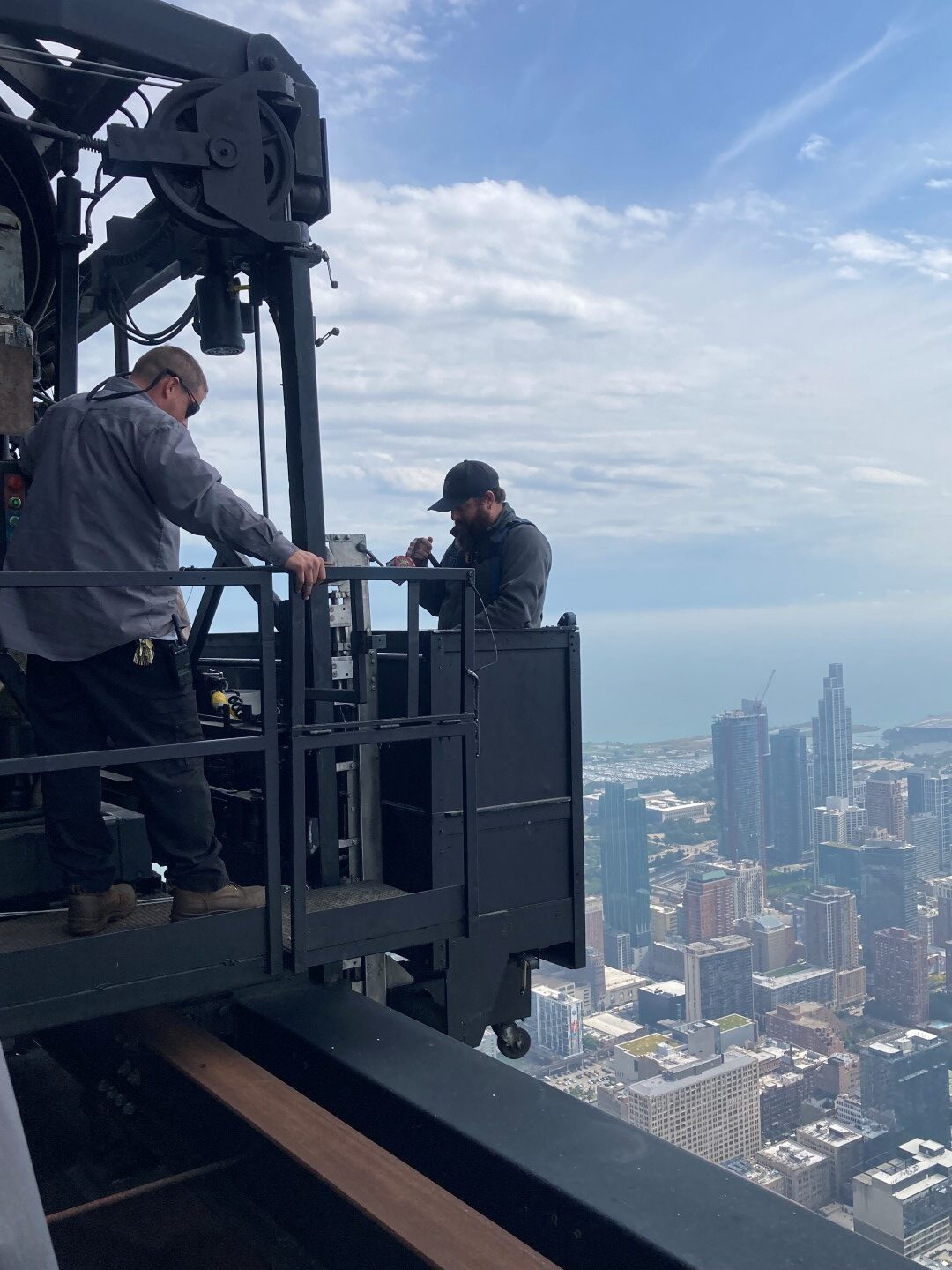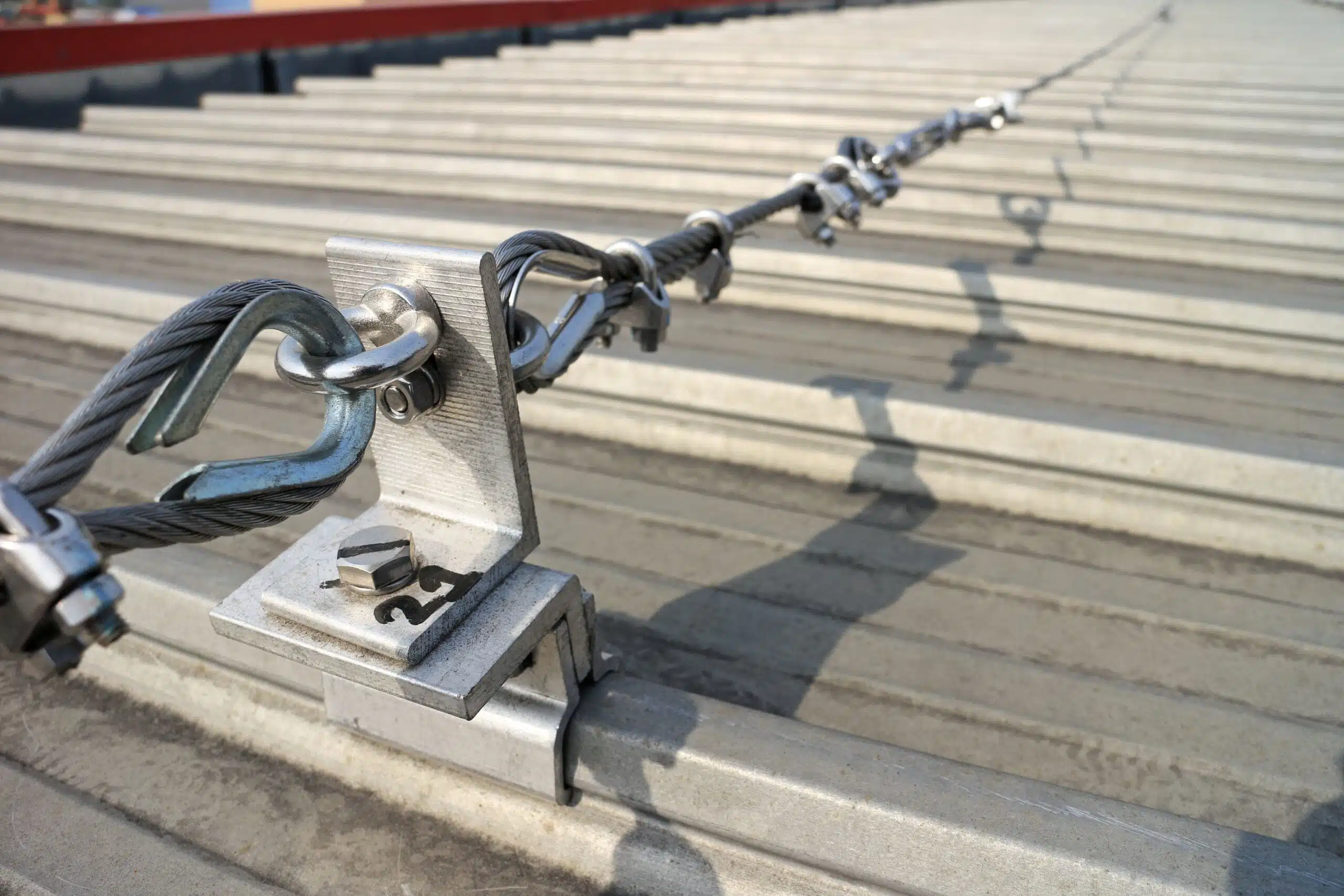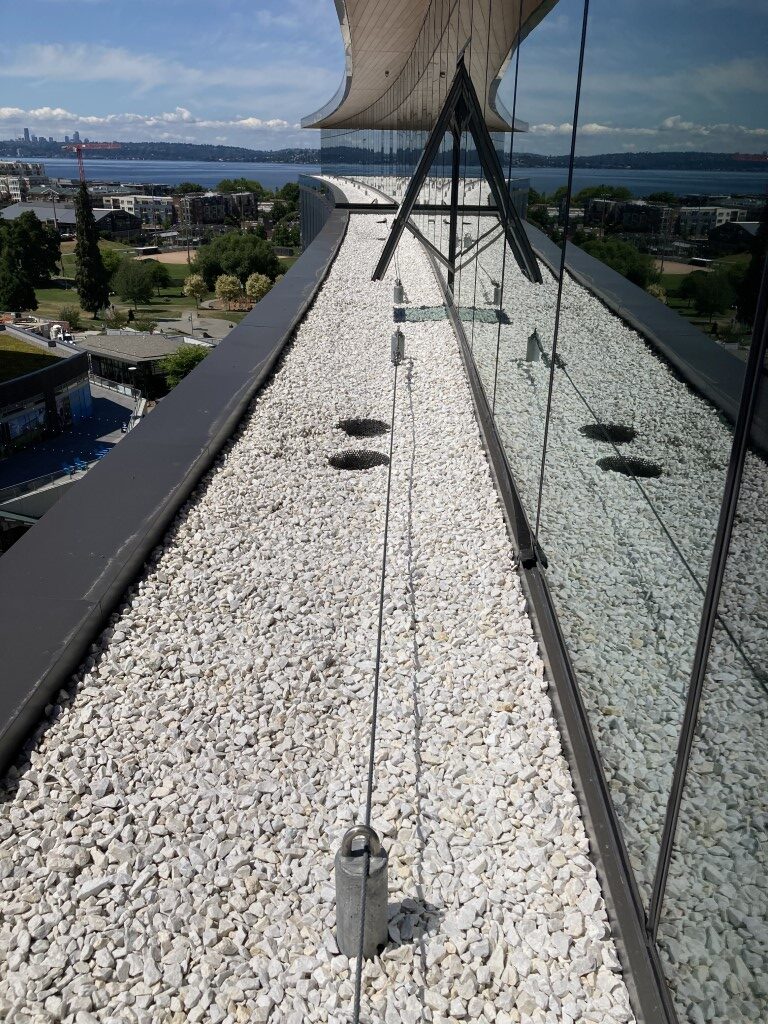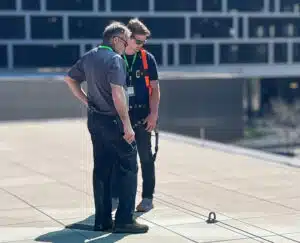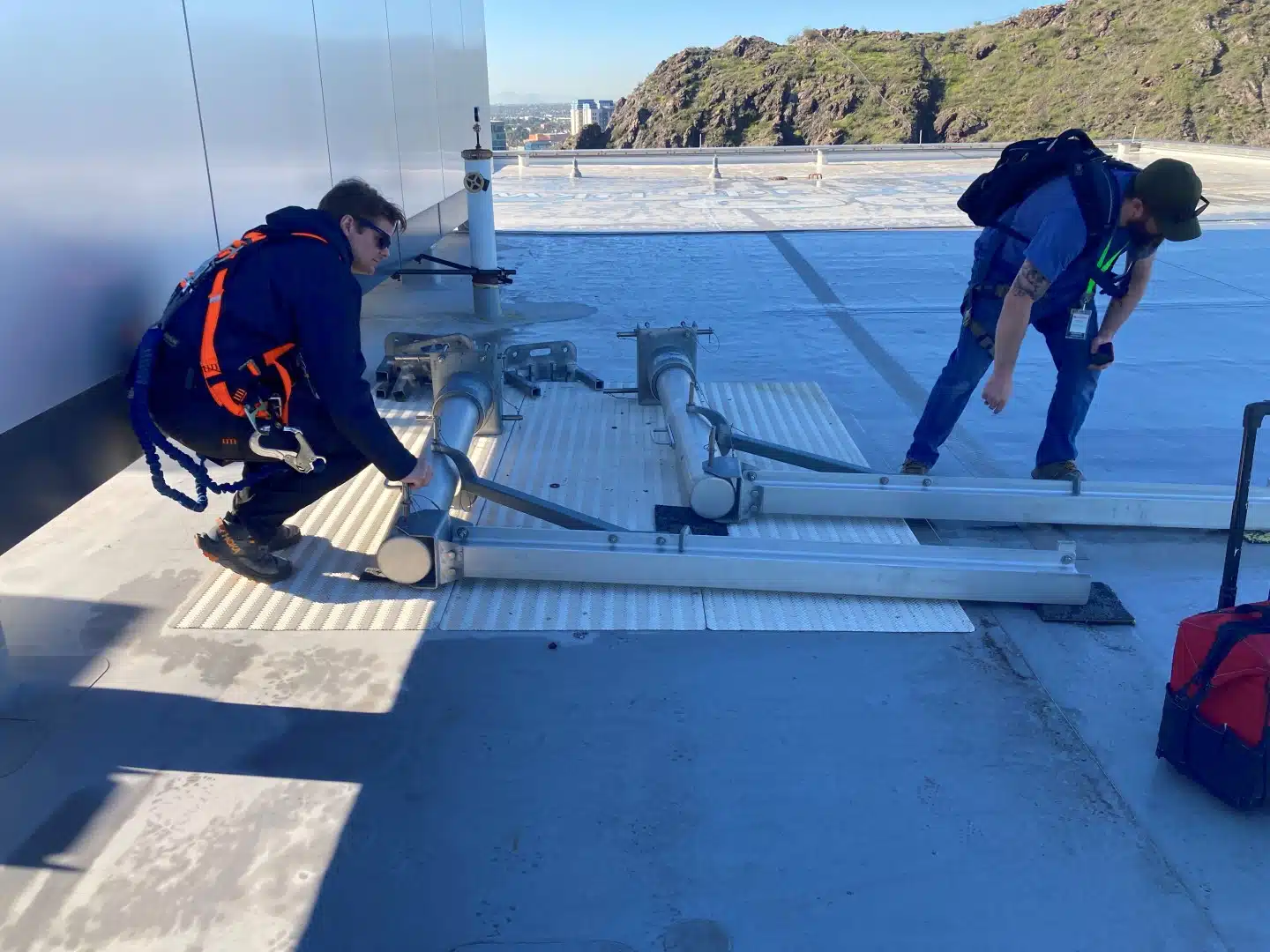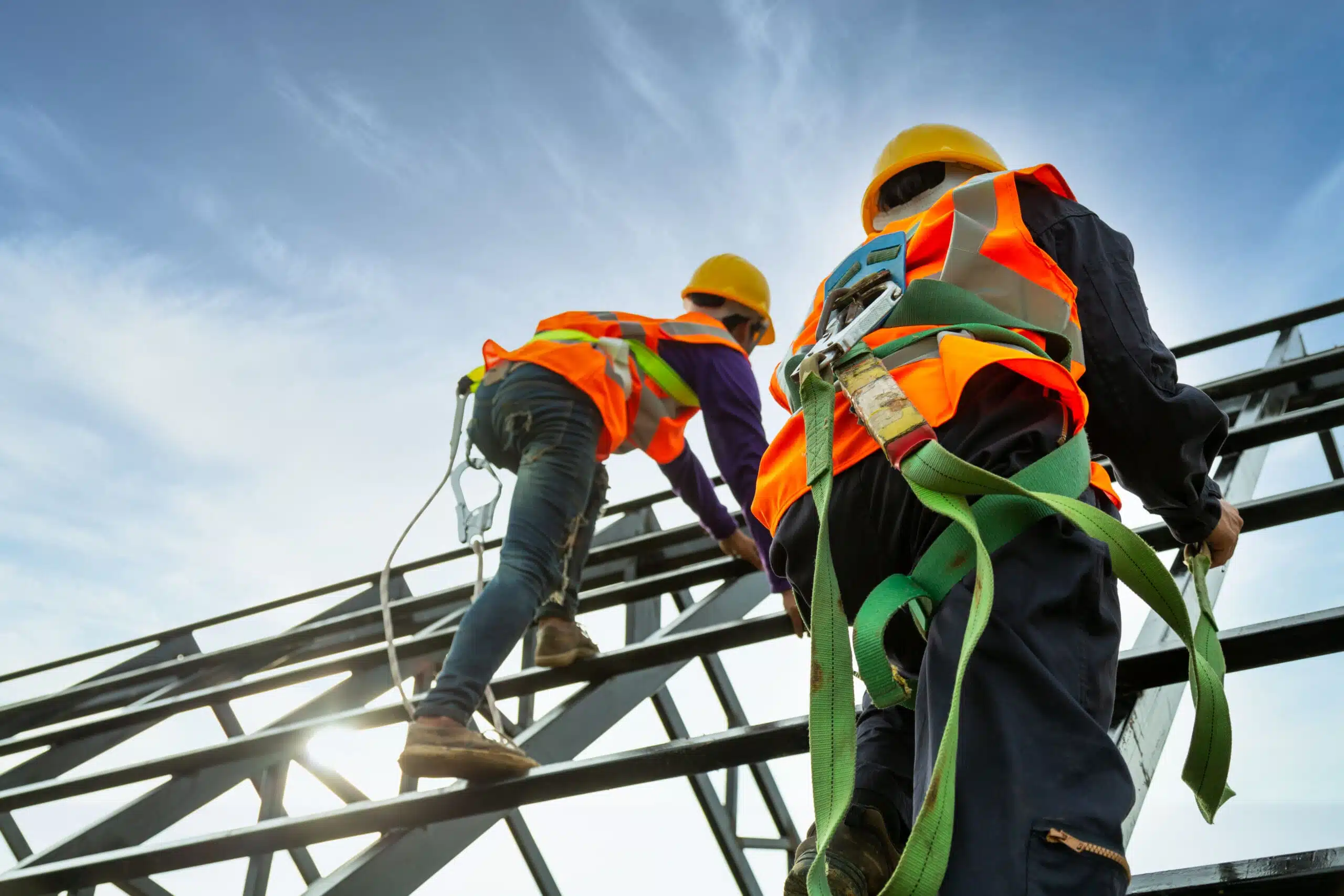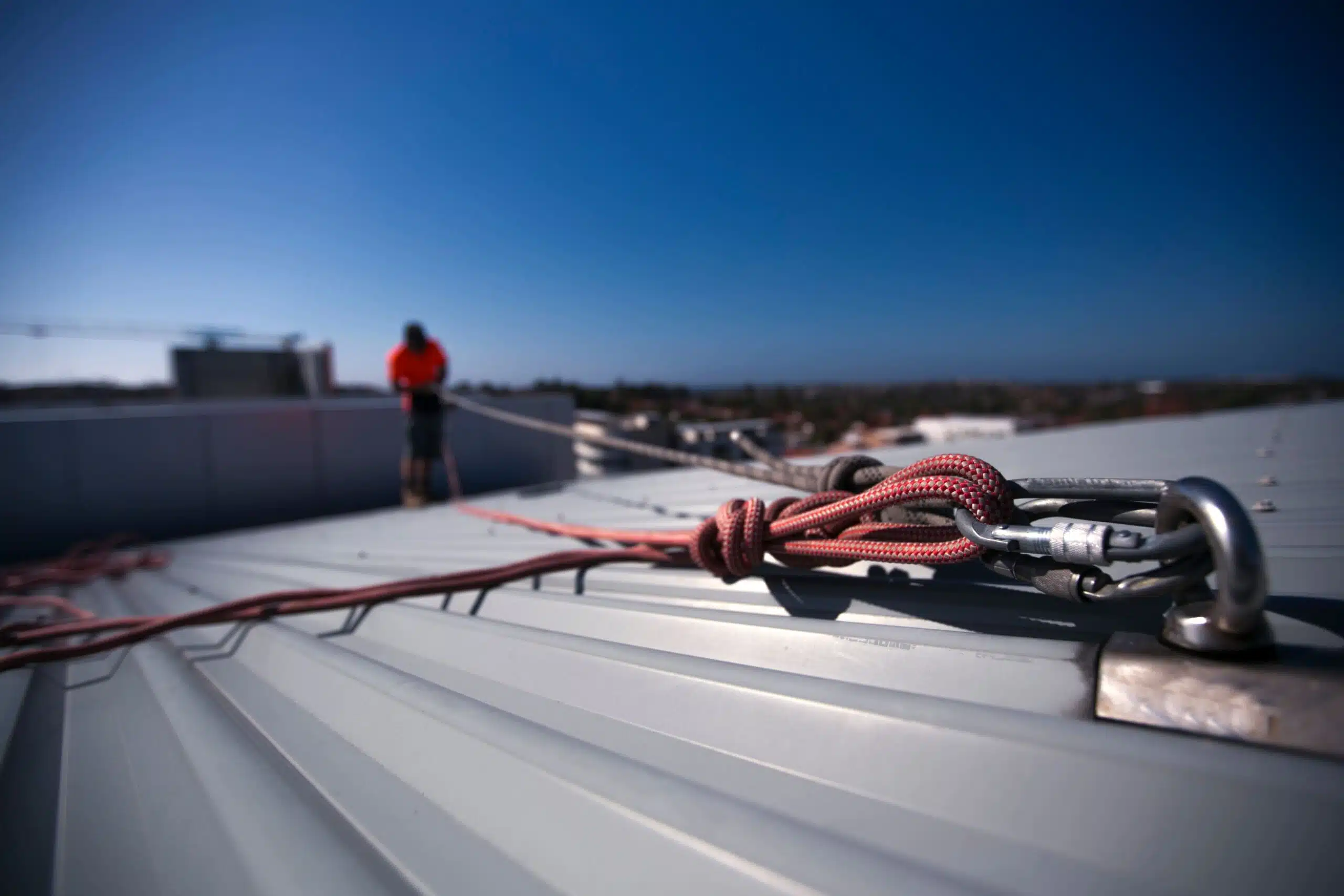What is the Difference Between a Rooftop Anchor and Davit? BMU or Lifeline?
If you own, manage, or care for a building that has more than 4 or 5 stories chances are there are pieces of equipment on your rooftop for workers to connect their safety harnesses, bosun seats, platforms or ropes to that help them repel down from the roof to access the façade for maintenance. This equipment also supports their safety lines. Wikstrom Engineering Consulting tests and inspects that equipment to make sure it is safe for workers to use and that buildings are following local and national standards and regulations.
Terms and descriptions can get confusing. Here are some of the definitions of standard rooftop safety equipment in service around the country.
Roof Anchor
Roof Anchors are a safety system tie-off point normally on building rooftops that workers use to secure themselves for safe rooftop and facade access. Unlike davits, they are not mobile as each anchor is fixed to the roof by weld, bolt, epoxy, is cast-in-place, or is otherwise built into the structure. Anchors are often raised above the rooftop and have a secure ring for carabiners, ropes, or wire ropes to hook onto. They are used to support the weight and movement of workers and harnesses, platforms, outriggers, tools, and other safety equipment.
An anchor layout or rooftop safety design is an important consideration. The anchors should be strategically installed on rooftops in a layout that optimizes appropriate rope angles and meets required redundancy for ultimate safety. Often roof anchors are used in conjunction with davit systems to cover an entire building’s façade.
Davit Systems (Bases & Arms)
Davit systems differ from anchors because they are a system comprised of bases and arms. To help you picture what a davit is, the word originally described the small crane used to lower lifeboats off of large ships. In the commercial building setting, the davit bases are secured onto the building structure much like roof anchors and hold the davit arms securely to the building with bolts, pins, or positive locking mechanisms. That way, when not in use, the davits can be removed and stored out of sight. When attached to the bases, davit arms extend over the edge of the building and support ropes or suspension wire ropes that attach to a platform, swing stage, bosun chair seat, or worker harness to aid in facade access. Davits can be mounted on a rail system to guide workers and equipment across and around a building’s facade.
Davits – Alone or Paired
Davits can be used one at a time or independently in situations where one davit arm is supporting a single-person rope descent or single-point suspension scaffold. However, when they’re used in pairs, or when two davit bases and two davit arms are used, they can suspend a powered platform with hoists connected on either end of the platform that provides more space for workers to maneuver horizontally while doing their task.
Building Maintenance Units (BMUs)
Building Maintenance Units (BMUs) are similar to davits in that they have arms or a boom that extend over the sides of the building to guide workers in a platform up & down and across a building’s façade. Unlike most davits, they are powered and include their own platform, basket, or stage. BMUs are permanently installed on a building and can be fixed in place or can traverse to multiple positions on the roof for full façade access.
Safety Lifelines
Lifelines typically consist of a wire rope that outlines or parallels certain areas of a building’s rooftop. The wire rope, or cable, is secured to rooftop anchors at each end or at intervals of a set distance. The wire rope is often threaded through, but not attached to, additional anchors. Workers can then attach their harnesses onto the lifelines with a lanyard for fall protection. Horizontal lifelines are most commonly used to keep rooftop workers from falling over the edge as they move around and work on the roof of a building. They are not generally used for suspended work by facade access workers.
Testing, Inspections & Certification
Whether your building has anchors, davits, or lifelines, regulations indicate they need to be load tested and certified every 10 years at a minimum. In many situations, they should be tested every 5 years or before expected heavy use.
Rooftop safety equipment that has been certified also is required to be inspected annually and before use.
Over the last 14 years Wikstrom Engineering has tested and inspected anchors on almost every type of building all around the US. In addition to individual buildings, we are good at managing the inspections and certifications at campuses with multiple buildings, keeping all the records and timelines current (and providing certifications and logbooks) so property management or engineering doesn’t need to. Universities, hospital and corporate campuses, sports stadiums, hotels, office buildings, apartments, tall, short, big or small we’ve been on them all.
We take pride in taking care of the customer’s needs first starting with a quick reply to a request for quote or a new inquiry.
Call or reach out today!

